Fishing Report: August 20, 2021

More amberjack spotted that unusual offshore
Amberjack action continues to impress many around the area from around 140 to 250 feet of water. We are seeing many more amberjack than we had anticipated in this warmer time of year, says Captain Dylan Hubbard of Hubbard's Marina.
MADEIRA BEACH, Fla. - Every Friday morning, Captain Dylan Hubbard of Hubbard's Marina joins Good Day to fill viewers in on his fishing forecast as we head into the weekend.
Here is his fishing report for August 20, 2021.
Inshore
Another week has gone by, and the red tide is still hanging around. However, it’s still much better a situation than it was, and I am hopeful that forecasts will change quickly as they have been going from showing something to showing nothing quickly.
Overall, the area remains fairly clear comparatively and the bay looks like it should remain clear even with the negative forecast for the John’s Pass area. Keep an eye on the forecasts and reports via this link if you are interested.
Mangrove snapper fishing inshore right now is super-hot from the back bays to the beaches. Virtually any dock, pier, bridge, jetty or even a rock or piling is holding plentiful and hungry mangrove snapper in decent concentrations. Slower moving tides make it easier to target them, especially when the water first starts to move on the inbound or outbound currents.
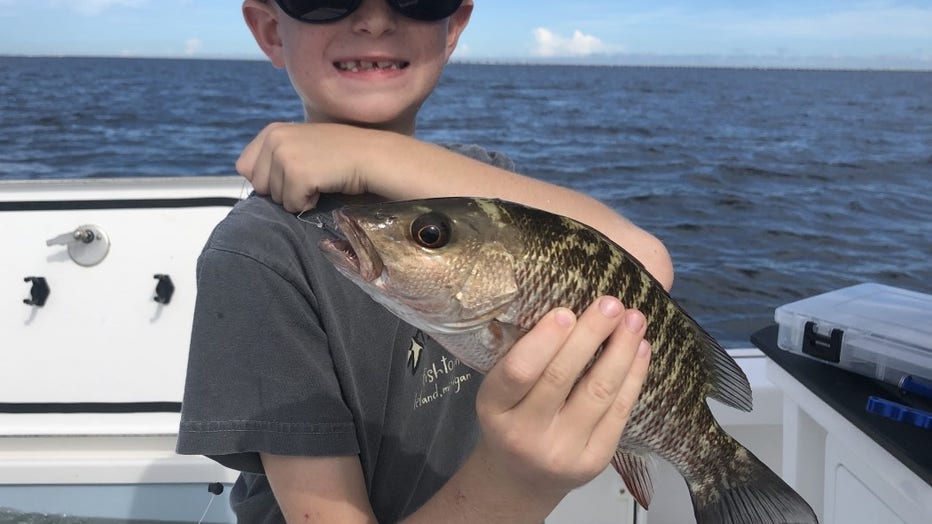
Mangrove snapper (Credit: Hubbard's Marina)
Look for them around the bait present and you can even chum them up into even more frenzied schools if you are looking to make it easy. It’s a great time to get out there with some light tackle and with the kids with some jig heads or super light knocker rigs to target these fun-to-catch fish on light tackle.
Trout action has also picked up around the area. We are seeing trout around the passes, along the beaches, at the edges of the flats and in those potholes and cuts adjacent to flats. Plus, even local bridges are holding the trout around the sandy bottom areas in less than 8-10 feet of water. Lighter tackle and live shrimp or white bait is a great way to go.
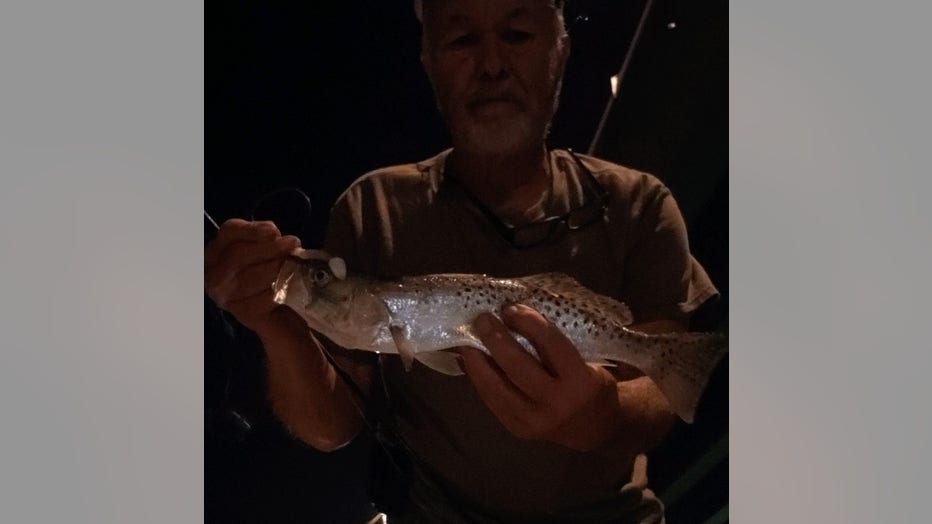
Trout (Credit: Hubbard's Marina)
However, soft plastics like DOA shrimp or those paddle tails on a jig head are awesome at luring trout into feeding. At night, dock lights and bridge lights are producing endless trout action where water is moving, and bait is present.
Snook are fired up around the passes lately as many big breeders are starting to return and stage up around the flats where bait is plentiful, and water is moving. Also, still, many are hanging under the shade of docks and bridges on their way back into the bay.
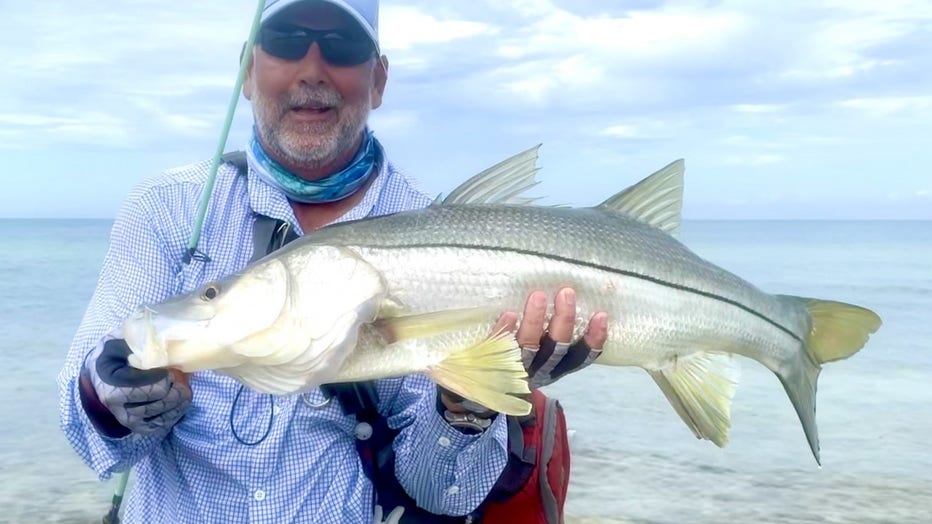
Snook (Credit: Hubbard's Marina)
Cut bait on the bottom is a great option for the bigger snook as they are opportunistic feeders in the warmer waters, and they are tired from their long journeys to the near shore spawning areas. Cut mullet or ladyfish or even large pinfish or threadfins are all great options for a bigger snook.
However, my favorite is a ladyfish around 8-14 inches that is nice, oily, and fresh. The smaller snook are much more active and aggressive and from around 24- to 32-inch fish are everywhere around the passes to the flats of the back bays and all in between.
Redfish action was extremely prevalent this past week with big schools cruising the back bay flats and shorelines at higher tides. We are seeing them along the beaches and in the passes too. Shrimp on the bottom or even pinfish are producing some solid redfish action. Crabs and cut threadfins work well too!
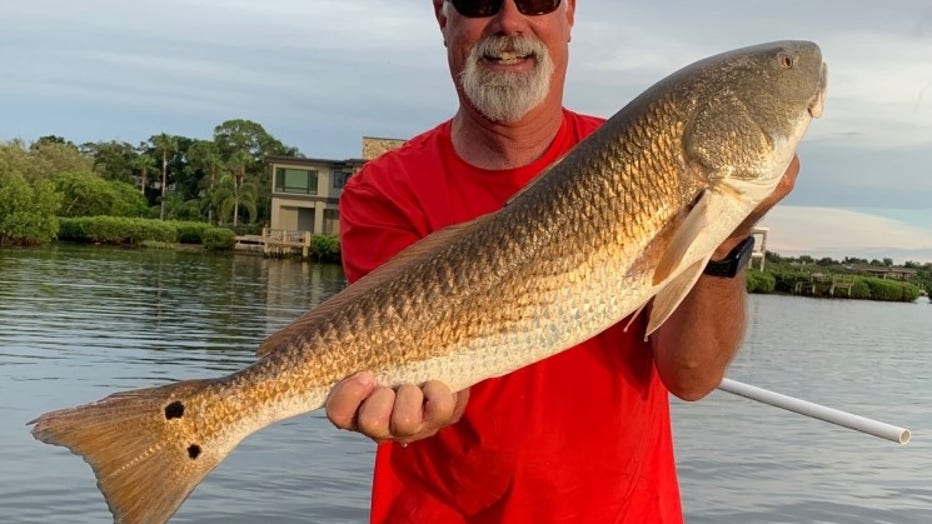
Redfish (Credit: Hubbard's Marina)
However, the redfish go-to artificial is the super light jig head and white soft plastic paddle tail working the mangroves at high tide when the redfish can get in there to forage for crustaceans. Also, look for active redfish around local schools of mullet foraging on the flats.
Mackerel are steady around the area where water is moving faster, and bait is present. We are seeing them around local bridges, jetties and deeper dock areas in the current when using fast-moving flashy lures or the live white bait.
Black drum are pretty active this past week, especially with all the rain flushing more brackish water out into the bays and estuaries. We are seeing a resurgence of these big black drum around bridges, docks and other structures, especially on the fiddler crabs, smaller pass crabs, cut blue crabs or larger shrimp on the bottom.
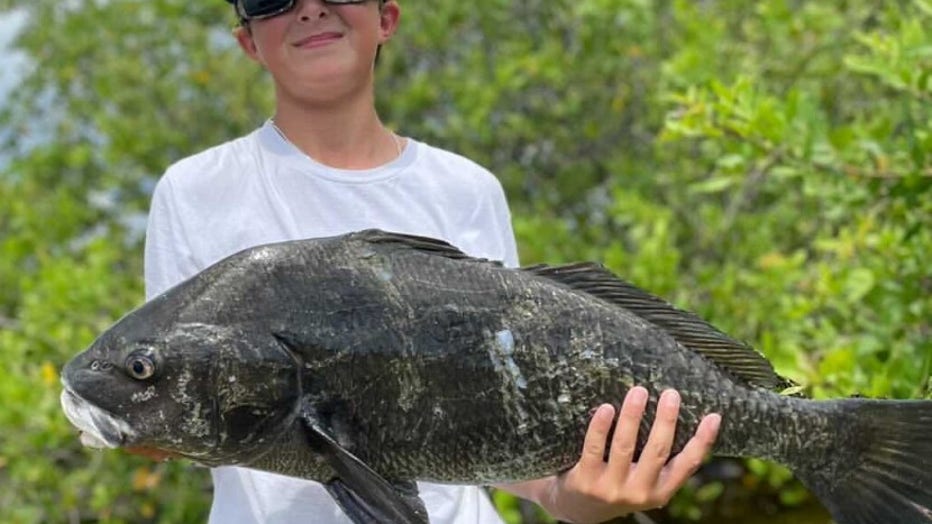
Black drum (Credit: Hubbard's Marina)
You can even sight fish them along the edges of the flats or mangroves and larger dock lines.
Lastly, my son Jack and I have been fishing more and more and he is mastering the art of catching the plentiful hard head catfish. He loves to keep dad busy rebaiting with dead shrimp and casting and slow retrieving.
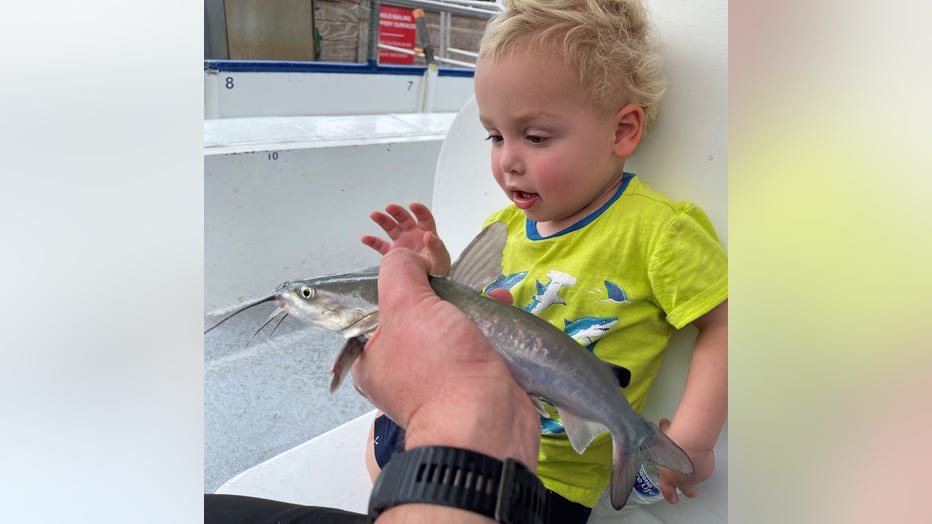
Jack Wilson Hubbard, Captain Dylan Hubbard's son, pictured with a catfish (Credit: Hubbard's Marina)
I feel like he likes playing with the reel handle and drag the most but at two years old, there’s not much more that I could expect, and nothing beats that beam in his eyes when something tries to pull back on the rod tip. Even if it is a big ole catfish.

Scientists keeping close eye on red tide
Dr. Tracy Fanara says red tide may become a bigger problem over the next few months.
Near shore
Hogfish action is still present but nothing really to write home about at this time with the super-hot waters we have had. When we get some storms move by that provide a few days of cloud cover, some higher winds and waves, that seems to excite them for a brief period. That’s before the high pressure and blue bird skies bring warming trends once again scatter them over large areas of hard bottom and shell.
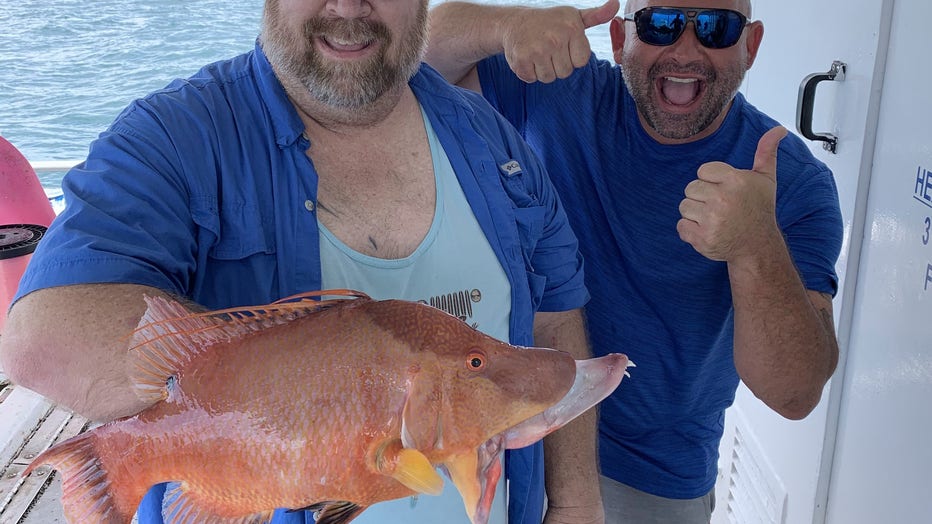
Hogfish (Credit: Hubbard's Marina)
Once they spread back out to forage and spawn in small aggregations, it’s nearly impossible to get the consistent heavy concentrations of action we look for while entertaining clients and fishing friends near shore. If you want to hunt for them, look for the occasional hogfish around 40-50 feet of water. However, you will have to wade through endless grey snapper or white grunts, porgies and a few lanes and seabass to get the hogfish chewing on lighter 30lb leader and 3-4ot hooks and light knocker rigs with live shrimp and around a 4000 series spinning reel. It is still a fun way to spend a day and catch plentiful good eating fish tacos in the process!
Lane snapper action is going well near shore, especially a little deeper from around 40-50 feet up to around 110 feet of water. We are seeing very plentiful and aggressive lane snapper here. Some are pushing up to twenty inches now in as shallow as 80 feet of water. We catch them on squid, cut threadfin or sardines and live shrimp while targeting mangrove snapper, red grouper or hogfish.
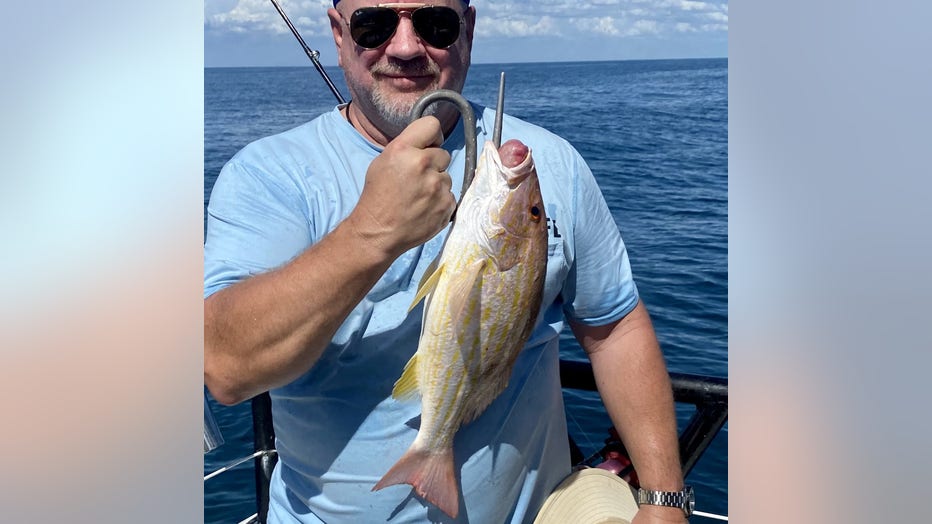
Lane snapper (Credit: Hubbard's Marina)
Mangrove snapper action seems to be most concentrated inshore or offshore and while we are seeing them near shore from around 40-100 feet of water, we are also seeing more concentrated action out deep beyond 140 feet or inside the bay on bridges, docks, piers and jetties.
Red grouper action is steady near shore from around 70-100 feet of water with the best action the deeper you get. We are finding them on live pinfish, squid strips, whole squid and even octopus tentacles pretty often. The overall action seems best offshore right now but we’re putting together respectable catches of red grouper near shore, but you have to sort through a lot of the 16-19 inch fish before getting some keepers over 20 inches. Please take caution to get them up quickly, use a dehooker like ours to get them off quickly, and then get them going back down as expeditiously as humanly possible if they aren’t big enough to go in your fish box!
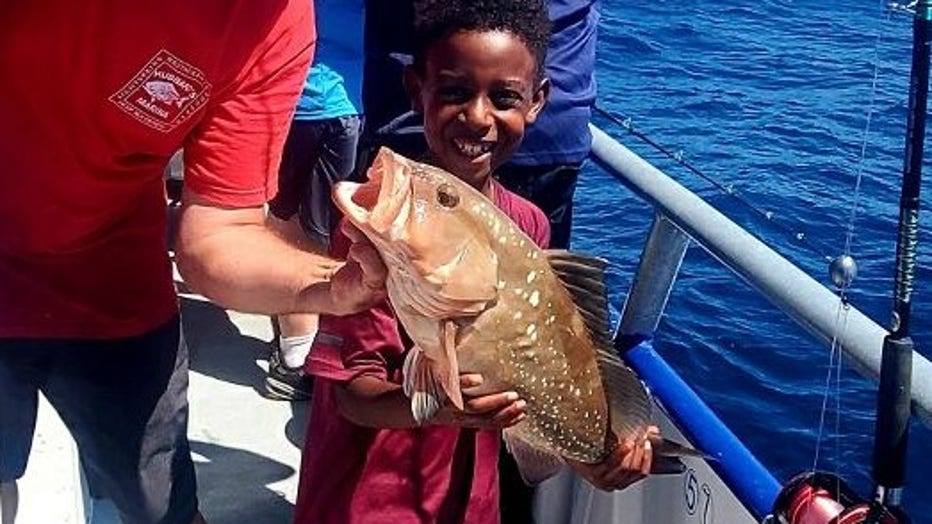
Red grouper (Credit: Hubbard's Marina)
With how hot the water and air are, the chance for barotrauma is exponentially increased and we don’t want to waste those barely legal fish that will enter the fishery next year or the year after or any of our prized offshore fish of any size! Don’t forget a descending device or if you’re extremely experienced or well-trained, a venting tool works well too!
Using a dehooker and a descending device and being as quick as possible will help to mitigate barotrauma issues and lower overall discard mortality.
Gag grouper fishing near shore has been tougher with the warm waters seems they are doing well along the shipping channel from Egmont Key to Port of Tampa Bay, but outside of that area they are spread out and leader shy until you get out deep. Many females are moving into the bay though to fatten up on the plentiful bait fish prior to their late wintertime move to spawning aggregation sites.
Offshore
Amberjack action continues to impress many around the area from around 140-250 feet of water. We are seeing many more amberjack than we had anticipated in this warmer time of year. Plus, we are seeing the bite continue now for more than a few weeks which is extremely positive news.

Amberjack (Credit: Hubbard's Marina)
We are hoping to get a few more weeks of this good action on the jacks before their season ends at the end of October. Big live baits, vertical jigs and even the big dead baits with the largest tackle fishing deep seems to be the recipe for keeper-sized jacks.
Gag grouper fishing, even offshore, was a bit tougher this past week. It seems Fred has aggregated them somewhere but not in our typical post-storm spots. It could have moved them out deeper for a spell or pushed them to another depth from where we were catching them. However, we are going to keep hunting around that 140-250 feet area to hopefully find them once again. Typically, we do well on the big gags when fishing deep this time of year for jacks and triggerfish and big scamp grouper too.
Luckily, while the gags were playing hard-to-get, the scamp grouper cooperated nicely for us on our mid-week and this past weekend 39-hour trips. We are hopeful this weekend’s full moon will have them even more excited as we return to deep water.
Red grouper fishing has been good for us out there beyond 120 feet of water fishing peaks, potholes, hardbottom bait shows, and virtually any structures. However, like the near shore areas, we are having to wade through large numbers of barely legal fish to catch good numbers of keeper fish 4-to-1 in some areas. This makes it even more imperative you come prepared with a solid pair of dehooking tools and a descending device and or venting tool.

Red grouper (Credit: Hubbard's Marina)
Pelagic action was a bit soft for us this past week, but we’re hoping the full moon will bring moving waters and a renewed pelagic magic offshore. We have seen some good gradients and lots of signs of life out there. Trolling during the 44-hour this weekend will hopefully help us land a big kingfish, tuna, wahoo or perhaps some mahi mahi!
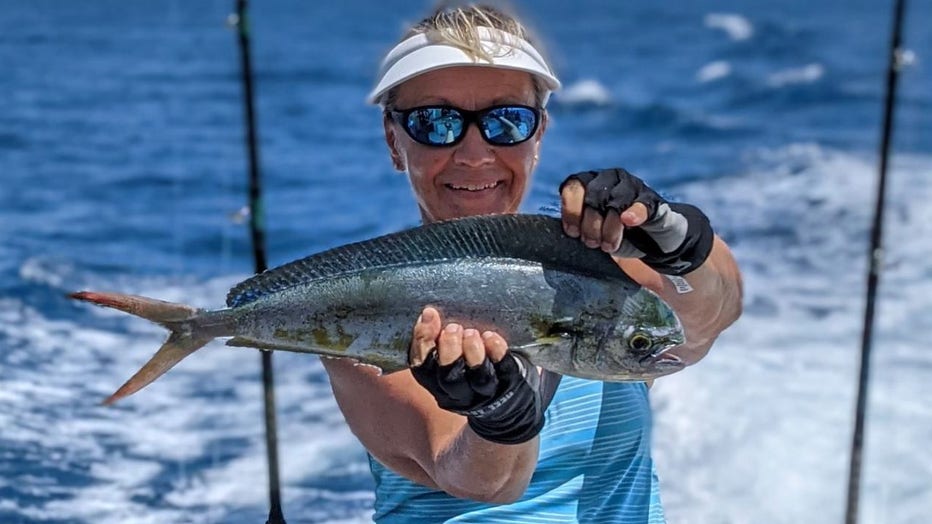
Mahi mahi (Credit: Hubbard's Marina)
DON’T BE A FOOL, bring a venting tool & Descending device
Keep in mind the importance of dead discards and discard mortality when engaged in near shore or offshore fishing. How many do you know right now that are all for catching and releasing snook, redfish, and trout but will be the first in line to kill a mangrove snapper, gag grouper, or red snapper? But the attitude completely changes when discussing these offshore species?
Plus, the same person inshore that will hold their breath and wet their hands before handling a breeder snook will go offshore and then cull through 20 red snapper before keeping their two red snapper they deem large enough to fill their two-fish bag limits. Meanwhile, the other 18 they released will often end up suffering fatal damage if not properly descended or vented?
Please help us to spread the word on the importance of descending or venting your released fish. Descending devices are most easy to use and quick to pick up on their use. They are most effective for most anglers.
However, an expert and precise angler with proper training and tons of experience can use a venting tool properly with similar outcomes. A venting tool requires you to pierce the fish while most descending devices are much less invasive. While using a venting tool, it is imperative you pierce them in the exact right spot, and you do not go but a quarter-inch or less in the fish. Most venting tools require you to ‘choke up’ on the tool to prevent over-penetration into major organs.
When fishing deep water, especially in the hot summer months, please make sure to treat all fish intended to be released like that breeder snook inshore and minimize the time it takes you to get him from the bottom to the boat using heavier proper tackle, not an ultra-light spinning reel.
Then once onboard, minimize the time out of the water. Then use a proper de-hooking tool and then, for the love of God, use a descending device or venting tool PROPERLY to ensure that fish has a chance to live another day.
Three things will help ensure the survivability of those fish released offshore:
- Making sure they are brought up quickly and do not expend all their energy in the fight.
- Make sure they are unhooked smoothly, easily, and as quickly as possible.
- Finally, make sure they spend the least amount of time at the surface at negative pressures where barotrauma exponentially increases its effect with each passing second.
Also, keep in mind when the water is warm, there is less dissolved oxygen content and the chances of barotrauma increase even more while its effects can be even more deadly.
LINK: Here’s all the information and more on barotrauma and how to mitigate that fatal damage to your future offshore catch
**Note: I recommend the Salt Strong articles at the bottom of the page under ‘webpages.’ I helped them develop those personally.
STATE SURVEY to improve recreational data and access
It is imperative that you have your Gulf Reef Fish survey endorsement on your fishing license.
You should get one if you are a private recreational angler or diver fishing from a private boat anywhere in Florida who intends to harvest, attempt to harvest or possess one or more of the following reef fish species: mutton snapper, yellowtail snapper, hogfish, red snapper, vermilion snapper, gag grouper, red grouper, black grouper, greater amberjack, lesser amberjack, banded rudderfish, almaco jack, gray triggerfish, Gag grouper, Red grouper, Scamp grouper, Mangrove snapper, Lane snapper, Kingfish, Tuna, or Mahi mahi.
Here is all the information and more on that program and how you can sign up.
TERMS OF REFERENCE:
INSHORE – from the back bays out to the bridges and including right on the beaches
NEAR SHORE – From the beaches out to 20 miles, or up to 100ft of water
OFFSHORE – from 20 miles or 100ft and beyond
For more fishing reports, photos, videos and more check out Hubbard’s Marina on Facebook, Instagram, YouTube, or Snapchat. Just simply search "HubbardsMarina" and do not forget our family motto, "If you’re too busy to go fishing, you’re just too busy!

